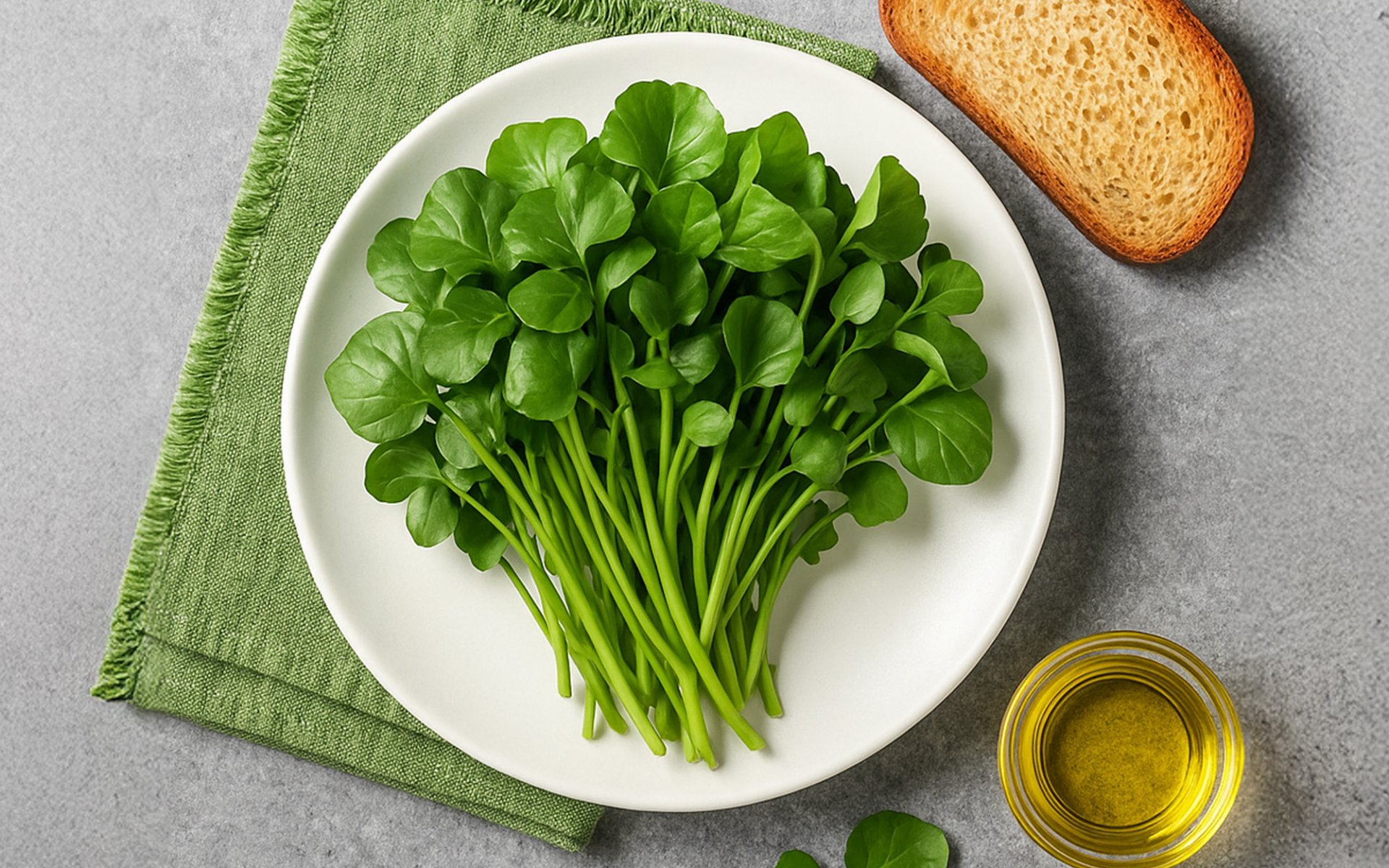Watercress

Watercress: A Spicy Green from the Cabbage Family
Watercress (scientific name: Nasturtium officinale), a green leafy vegetable that grows in water, belongs to the cabbage family, just like kale and broccoli. Its distinct feature is a slightly spicy taste, similar to mustard or wasabi, which adds a refreshing kick to various dishes.
An Ancient Legacy in Food and Medicine
The history of Watercress dates back over 3,000 years, with historical evidence showing it was well-known and utilized by ancient Persians, Greeks, and Romans as both food and medicine.
- Ancient Romans: Believed Watercress provided strength and prevented diseases, making it a dietary staple for their soldiers.
- Ancient Persians: King Xerxes once commanded his soldiers to eat Watercress to enhance their strength during marches.
Hippocrates: The Greek "father of modern medicine," used Watercress to treat various ailments, such as scurvy. He even grew Watercress at his first hospital on the island of Kos to use as a primary herb for patient treatment.
From France to the World: The Rise of Commercial Cultivation
As the demand for Watercress grew, people began to find systematic ways to cultivate it. France pioneered commercial Watercress farming in the 17th century near Paris. They developed a system of growing it in flowing water beds, mimicking its natural environment and resulting in high-quality yields.
Commercial cultivation then quickly spread to other European countries, particularly England, where Watercress became a vital part of the English breakfast and was popular among the working class due to its affordability and nutritional value.
Watercress in Thailand: The Famous "Betong Water Vegetable"
Watercress was introduced to Thailand about 5060 years ago and was cultivated in cool, high-altitude areas with clean, pristine water, such as the Betong district in Yala province. This led to its local name, Phak Nam Betong (Betong water vegetable), which has since become a local specialty. It is also grown in other parts of northern and southern Thailand.
In Thailand, Watercress is often confused with "Phak Ped" (a different species), but they are botanically distinct. Watercress is in the cabbage family, while Phak Ped is in the amaranth family. Thai Watercress has a hollow stem and compound leaves with 3-8 leaflets, a lengthier leaf than Phak Ped, and a subtle mustard-like aroma.
This vegetable requires high humidity and clean water, so it is often grown using Hydroponics or in shallow, slow-flowing water beds. Watercress grows fast and can be harvested all year round.
The "Queen of Vegetables": Packed with Nutrients
Watercress has been dubbed the Queen of Vegetables for health enthusiasts because it is packed with essential nutrients, including calcium, potassium, vitamin C, vitamin A, iron, amino acids, antioxidants, and dietary fiber that is great for the digestive system. Research also confirms that Watercress has anti-cancer properties and helps support heart, bone, and overall health.
With its unique spicy and refreshing taste, Watercress can be used in a wide variety of dishes. It pairs well with many foods, such as salads, stir-fries, and is often used in pork bone soup to help cut the richness and enhance the flavor. It can also be eaten with sandwiches or used as a garnish for meat dishes, proving that this vegetable is more than just a foodit's a part of a long-standing history of healthy eating.


